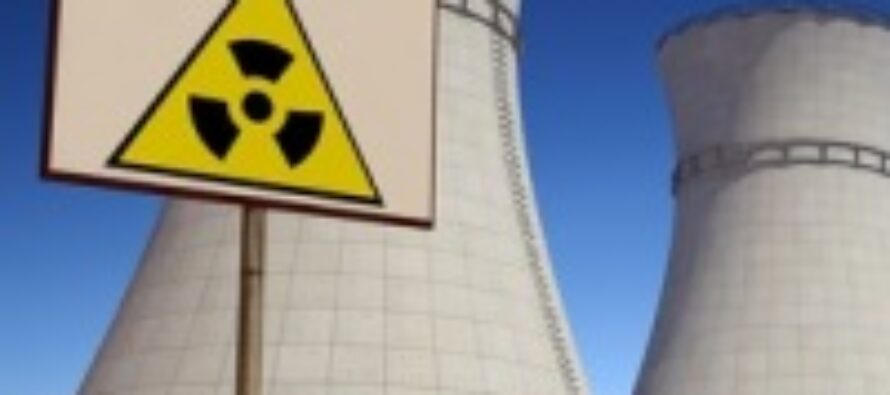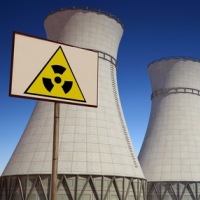Using Antacids as a Treatment for Exposure to Nuclear Fallout

This prepping and survival post contains important information on using simple OTC antacids as a treatment for internal contamination with radioactive isotopes from nuclear fallout. The radioactive fallout might come from a nuclear power plant disaster, or a dirty bomb, or a nuclear bomb explosion. Regardless of the source, at least several different types of radioactive elements are released, and these isotopes can end up in the air, food, and water.
The most prevalent radioactive element in nuclear fallout is likely to be iodine-131 (a radioactive isotope of iodine). The treatment, as most preppers know, is potassium iodide (KI) or potassium iodate (KIO3) tablets. KI tablets are approved by the FDA for treating exposure to radioactive iodine. KIO3 tablets are suggested by the World Health Organization for the same purpose. The pills flood the body with safe non-radioactive iodine, reducing possible uptake of the radioactive iodine by the thyroid.
But what can you do for internal contamination with other radioactive elements? The answer is much less well known. I found only a few websites with information on treatments for exposure to other radioisotopes. The websiteRadiation Exposure Level and Effects has a good overview as well as links to some authoritative sources. There is a U.S. Health and Human Services (HHS), National Library of Medicine website, called “Radiation Emergency Medical Management”, with a section on Radiation Countermeasures for Treatment of Internal Contamination. Then there is a report, which seems to be the original source for most of these treatments, from the National Council on Radiation Protection and Measurement (NCRP).
The treatment options are somewhat complicated, so I’ll just summarize them here. See the sources above for details.
For exposure to radioactive strontium-90 or radium, ordinary antacids, available Over-The-Counter, are suggested, in two steps.
1. The first step in the treatment blocks absorption of these two radioactive elements in the GI tract. This involves taking a dose of aluminum hydroxide gel (an OTC antacid) or a dose of Gaviscon, which contains aluminum hydroxide. The use of aluminum hydroxide is the preferred “blocking” treatment.
An alternative is to take calcium phosphate, which is an OTC calcium supplement. A different alternate treatment is to take sodium alginate (alginic acid). This latter compound is one of the “inactive” ingredients in Gaviscon. So if you take the Gaviscon, you’re getting two effective ingredients. Gaviscon is available as tablets or in liquid form.
You take the first step in this treatment as a one-time dose. You take the second step in this treatment on a daily basis.
2. The second step in the treatment for internal contamination with strontium or radium is the antacid/calcium supplement calcium carbonate (e.g. TUMS). Calcium carbonate competes with strontium and radium for bone binding sites. Basically, both strontium and radium are “bone seekers”; they will be taken up by the body (mistaken for calcium) and stored in the bones and teeth. That is not what you want. Strontium and radium remain radioactive for, well, essentially the rest of your life. But if you have enough calcium in your system from the TUMS (or generic calcium carbonate), then the strontium and radium are diluted and are less likely to be stored in your bones and teeth. Your system takes up the ordinary calcium instead of the radioactive strontium or radium.
How prevalent is strontium in nuclear fallout? It is the second most common isotope, after iodine-131. The iodine decays with a half-life of 8.1 days; almost all of it will have decayed after 10 half-lives (81 days). But strontium has a half-life of 29.1 years; almost all of it will have decayed in 291 years. Strontium is a serious problem in nuclear fallout.
What other isotopes are treatable with OTC medications?
There is an OTC treatment for internal contamination with uranium. It involves ordinary sodium bicarbonate (baking soda), dissolved in water, taken by mouth. This antacid has the effect of making the urine alkaline instead of acidic, which then has the beneficial effect of helping to clear uranium from your system. (I don’t know why.)
Now you might say that uranium is one of the less common isotopes in nuclear bomb fallout, and you’d be right. But it is found in nuclear power plant waste in large quantities. And it is possible, but unlikely, that a rogue nation might use uranium in a dirty bomb. So uranium is not beyond the scope of possibility as a radioactive element of concern.
For certain other radioactive elements, you need a prescription medication, such as DTPA (for several of the less-common isotopes) or Prussian blue (for cesium-137). Supposedly, the CDC has a stockpile of these and other important medications, for use in a radiation emergency anywhere in the U.S. But I’m skeptical that it would be distributed promptly and efficiently.
As for the above-mentioned OTC antacid medications, it would be relatively inexpensive to stock up on these items for your radiation emergency kit. See the sources above that I mention above for all the details, including dosing instruction and cautions.
This article was originally published by Thoreau at Prep-Blog.com
Visit: EZ Battery Reconditioning To Learn More here: http://www.survivalistdaily.com/ezbatteryreconditioning








Let me tell You a sad story ! There are no comments yet, but You can be first one to comment this article.
Write a comment